Health Qigong Wu Qin Xi (Five Animals Qigong)
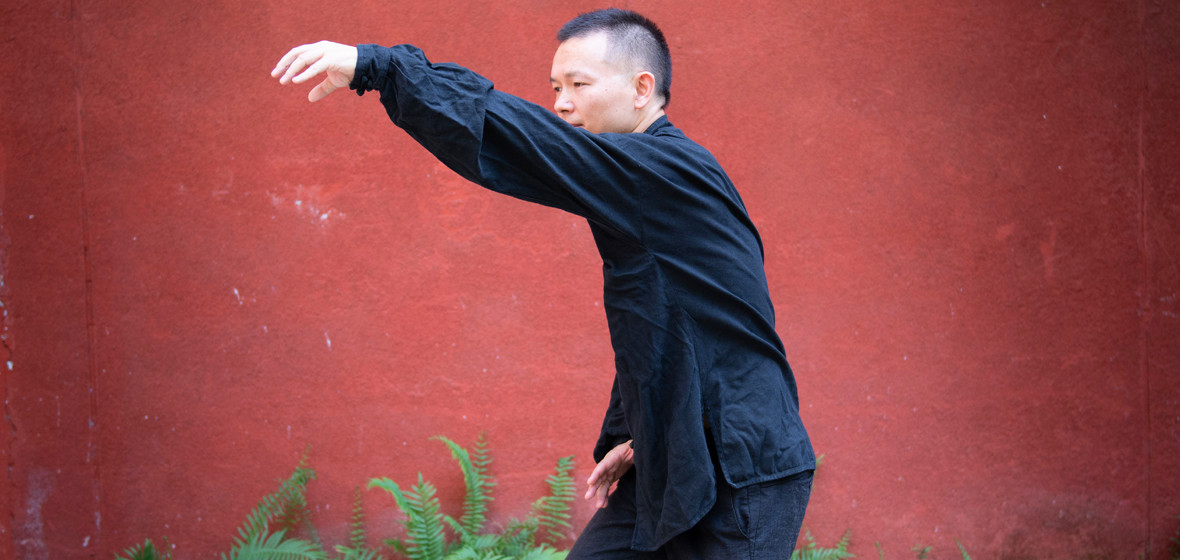
Wu Qin Xi or Five Animals Qigong uses imitations of animals as a basis for Qigong practice. We imitate the characteristics, spirit, and physical movements of each animal for mental balance and physical ease, specifically aiding respiration, digestion, circulation, the flexibility of the joints, spine health, leg strength, level emotions, clarity, fatigue, nervousness, and anxiety. There are two movements per animal to practice, each movement helps unblock meridian channels in the body and loosen areas of contraction and tension. Medical studies indicate that practicing Wu Qin Xi regularly brings about many benefits. It limbers up the joints, strengthens the waist, nourishes the organs, helps prevent diseases, and probably prolongs life.
1. The origins
The creation of Wu Qin Xi was attributed to Hua Tuo during the 2nd century C E. He was the most famous and highly respected Chinese physician and surgeon in Chinese history. He is also believed to be the first person in the world to have developed the use of anesthesia which he called mafeisan (Numbing and Boiling Powder) and applied this substance to patients undergoing abdominal surgery.
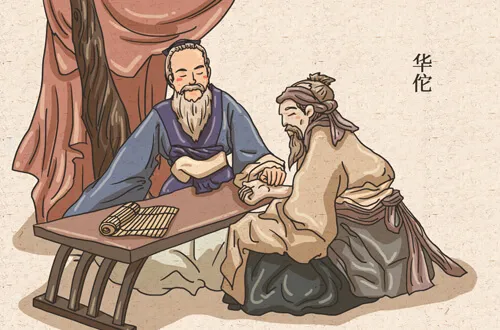
Luo Guanzhong immortalizes Hua Tuo within his 14th-century literary masterpiece, The Romance of the Three Kingdoms(三国演义), depicting Hua as a “magical doctor”. Believing that the highest healing skill is to teach others to heal themselves, Hua Tuo set out to create a complete self-healing system that anyone could use to stay healthy or cure themselves of most ailments. He invented a series of exercises known as Wu Qin Xi exercise (frolics of the five animals), in which the patient imitated movements of the tiger, deer, bear, monkey, and crane (bird). Hua Tuo believes that Wu Qin Xi movements, when properly performed, stimulate that internal lubrication of free-flowing qi, blood, and lymph essential to our continued health and sense of well-being. It is said that his disciples Wu Pu and Fan E lived to be over 90 (average life expectancy is only about 34 then), thanks to the regular exercises of Wu Qin Xi.
Wu Qin Xi inspired many qigongs and martial arts styles in later dynasties, like Wild Goose (Dayan) Qigong, Crane Boxing, and Mantis Boxing.
In 1982, Wu Qin Xi became one of the recommended traditional exercises for China's medical college and university students. In 2009, Hua Tuo's Wu Qin Xi was listed as an intangible cultural heritage under state protection in Hua Tuo's home city of Bozhou, in eastern China’s Anhui Province.
In 2001, experts from several fields such as physiology and sports medicine, organized by the General Administration of Sport of China, re-choreographed nine kinds of ancient Qigongs. Health Qigong Wu Qin Xi is one of them. The book Wu Qin Xi: Five-Animal Qigong Exercises (Chinese Health Qigong) was published in 2008. The following Step-by-step Guide was based on the standardized forms compiled by the Chinese Health Qigong Association.
This version of Wu Qin Xi is simple and is suitable for beginners.
2. Characteristics
Symbolically, the five animal-imitating stances represent different internal organs and functioning systems. Therefore, each of the five stances is designed to regulate the functions of the corresponding organs and related body systems.
The Tiger play is to develop muscular strength. It improves the flexibility and suppleness of the spine. It strengthens lumbar muscles, prevents and treats common problems of the waist. The Deer play is to increase muscular strength in the waist. It can prevent and treat frozen shoulder and correct deformity of the spinal column.
The Bear play improves the functions of the spleen and stomach. It strengthens muscles around the hips and lower limbs, as well as improves balance.
The Monkey play is to develop suppleness and agility. It improves blood circulation to the brain.
The Crane play is to improve lung capacity and can alleviate symptoms of chronic bronchitis and pulmonary emphysema.
3. Connections Between Five Animals and Five Elements:
The theory of the Wuxing (Five Elements) describes movement and relationships between different phenomena in nature. It evolved from the study of various processes, functions, and phenomena of nature. The theory asserts substances can be divided into one of five basic elements: wood, fire, water, metal, and earth, which contain their specific characteristics and properties.
Each animal is related to one of the Five Elements. Each animal also relates to one of the five yins and five yang internal organs.
| Animals | Five Elements | Internal Organs | Functions |
|---|---|---|---|
| Tiger | Water | kidneys, bladder | urinary system and reproductive system |
| Deer | Wood | liver, gall bladder | digestive and hormonal systems |
| Bear | Earth | spleen, stomach | pancreas and digestive system |
| Monkey | Fire | heart, small intestine | blood vessels and circulatory system |
| Crane | Metal | lung, large Intestine | respiratory system |
4. Practice Tips
Like most other Qigong sets, they should be practiced with a relaxed spirit and peaceful mind. The mind should thus follow the movements and should be coordinated with the circulation of qi with the body’s movements. Meanwhile, concentration is required to accompany individual movements.
Breathing throughout the exercise should be relaxed and easy. Breathe into the lower stomach, with slow, regular, natural breathing.
As you can see, the five animals are with very distinctive styles of movement. The idea is not merely to mimic the external motions of the animal, but to internalize the nature of that animal as you practice. Each play also emphasizes different health benefits and you can choose a specific animal for specific results. Their movements form arcs, spirals, waves, and spins, in accord with the Chinese belief that circular movement underlies all mental and subtle energetic activity. To avoid imbalance, the movements are sometimes slow, sometimes fast, and are deliberately designed to alternately strengthen and soften the body.
5. Wu Qin Xi Step-by-step Guide
Opening:Before starting the first movement, take a couple of moments to clear and calm the mind.
Feet within shoulder width, and feet should be parallel with each other.
Qigong breathing (inhale: belly in; exhale: belly out) for 3 breaths.
Each Animal Play consists of two routines:
1. Tiger Play 虎戏:
Raise the Tiger’s Claws (虎举)
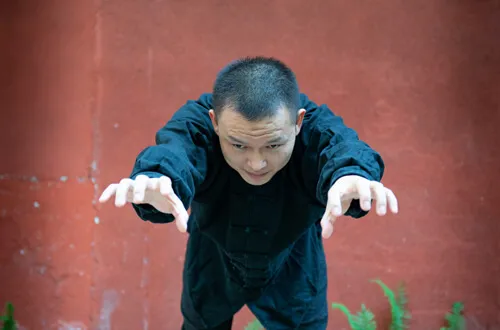
Form Tiger’s Claw in both hands by spreading 10 fingers out and flexing the fingers joints naturally.
Inhale and at the same time bring the hands up, arching towards the centerline of your body. Once your hands reach the level of the chest, unclench the fists and raise the palms upwards as far as possible then form the claws again. Lower the fists to the front of the chest and unclench the fists into palms, then press down passing lower abdomen and return to the side. Eyes follow the movement of the hands. Repeat 3 times.
Tiger Seizes its Prey (虎扑)
Extend arms forward as far as possible keeping spine straight and fully extended. Continuing, keep the bodyweight back, step out the left heel, and form a left empty stance. At the same time hollow fists open to form Tiger claws and extend forward and downwards to the side of the knees – imagine a tiger pouncing on its prey. Eyes look forward then downward. Repeat 3 times.
2. Deer Play 鹿戏
Colliding the Antlers 鹿抵
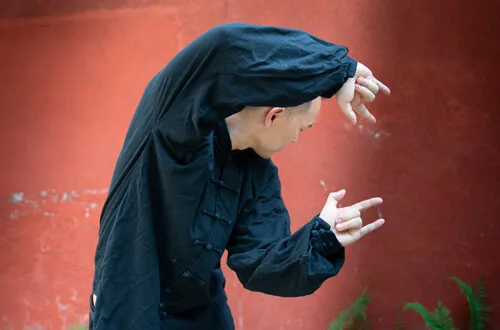
Hands form deer antlers (thumb, index, and pinkie extended; middle and ring fingers contracted). Overstretching to the right while stepping out with the right foot, then repeating on the other side. Repeat 3 times on each side.
Running like a Deer 鹿奔
Arms front, step out with the left foot, make fists (hooves), rock back on right leg with antler hands, repeating with the other leg. Repeat 3 times on each side.
3. Bear Play 熊戏
Rotate waist like a Bear 熊运
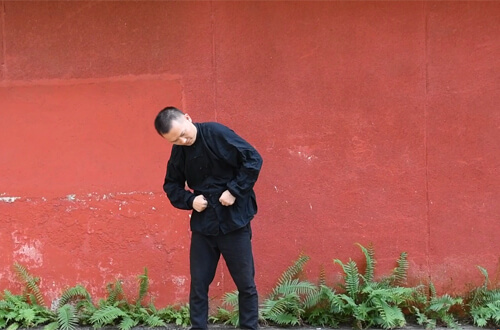
Form a bear paw (The tips of the index finger and the thumb press lightly together, the other fingers flex to form a hollow fist). Standing like a bear on its hind legs while rotating upper torso like a bear is waking from hibernation. Focus on creating a vertical circle that is driven by the waist, with the hands, arms, shoulders, and head all following your waist movement.
Repeat 2 times on each side.
Swaying like a Bear 熊晃
Sway from the waist while stepping heavily toward the left side and then right side like a bear walking.
Repeat 4 times
4. Monkey Play 猴戏
Raising Monkey Paws 猿提
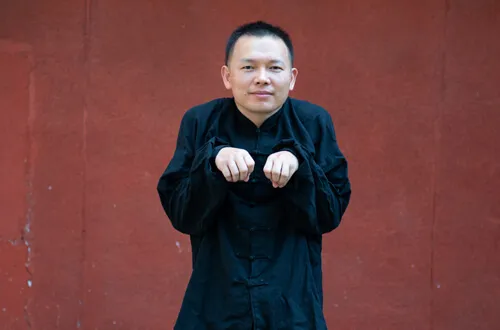
Form Monkey Paw (The tips of the fingers and the thumb press lightly together, the wrist is flexed). Lift the shoulders, contract the abdomen, pull the pelvic bottom-up, and then lift the heels. Then turn your head to the right. Relax the shoulders, abdomen, and pelvic bottom, and then drop the heels.
Repeat the above movements, but turn your head to the left.
Repeat the entire movement 4 times.
Picking Fruit 猿摘
Hold the breath, position yourself like a monkey climbing a tree; stretch out one hand like grasping a fruit and have one leg raised; make the other leg twist with the body while taking a deep breath. Do this movement on both the right and left sides four times.
5. Crane (Bird) Play 鸟戏
Crane stretching Upwards 鸟伸
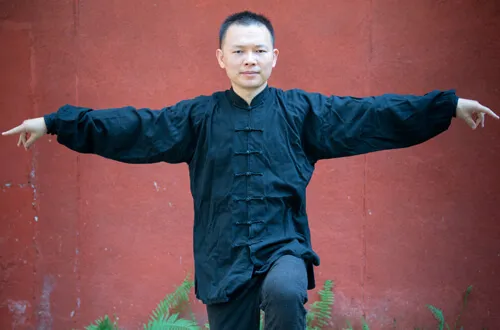
Form bird’s Beak: Both palms face down, fingers pointing forwards, place one hand on top of the other. Stretch up, release down, wings stretch back, and foot stretches back, repeat with the other foot.
Repeat 4 times.
Flying like a Bird 鸟飞
Form Crane’s Wing: Spread the fingers, the index finger, little finger, and the thumb extend upwards, the middle and ring fingers flex downwards.
Lift your left leg slightly, stretch wings to shoulder height, leg down, wings down, and then lift both up high. Repeat with other foot.
Repeat 4 times.
Closing
All Qigong exercises should include a closing sequence, which settles the body's energy back to the Dan Tian, calms the mind, and relaxes the body.
Bring the palms to the sides and face the palms up while positioning the feet at shoulder-width apart. Inhale and at the same time bring the hands up, arching towards the centerline of your body. Once your hands reach the level of the chest, face the palms downwards. Exhale and press the Qi down your centerline with your fingertips facing each other. Repeat 3 times.
Recommend books:
Wu Qin Xi: Five-Animal Qigong Exercises by Chinese Health Qigong Association
The Way of Qigong: The Art and Science of Chinese Energy Healing by Kenneth S. Cohen

OR
Are you eager to begin your Chinese cultural journey?
Drop us a line and we will promptly connect you with our leading China expert!
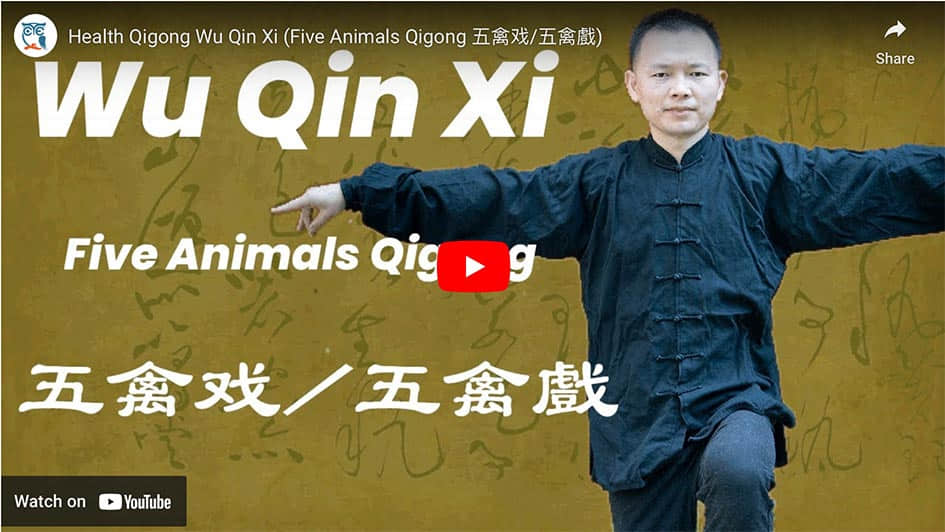 Learn to practice Wu Qin Xi by following our step by step instruction
Learn to practice Wu Qin Xi by following our step by step instruction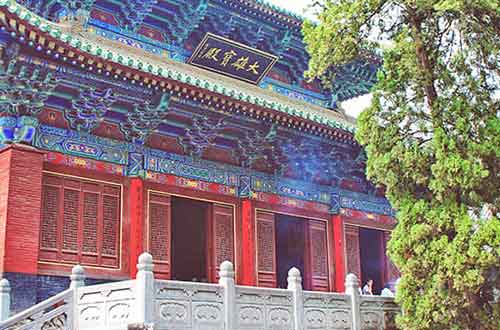 Top 5 Origin Place of Kungfu
Top 5 Origin Place of Kungfu 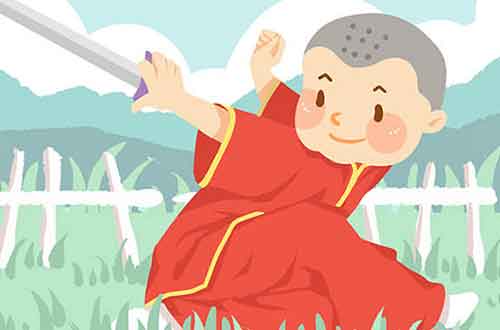 The Main Different Kung Fu Styles
The Main Different Kung Fu Styles 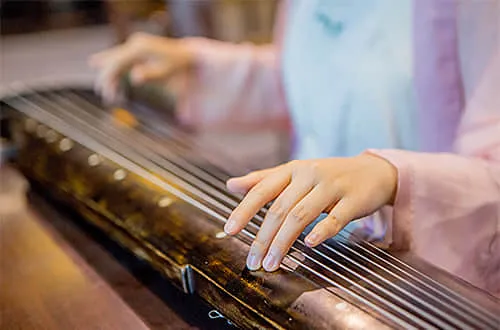 Chinese Music
Chinese Music 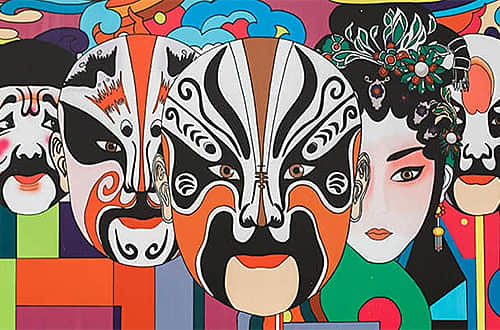 Beijing Opera
Beijing Opera